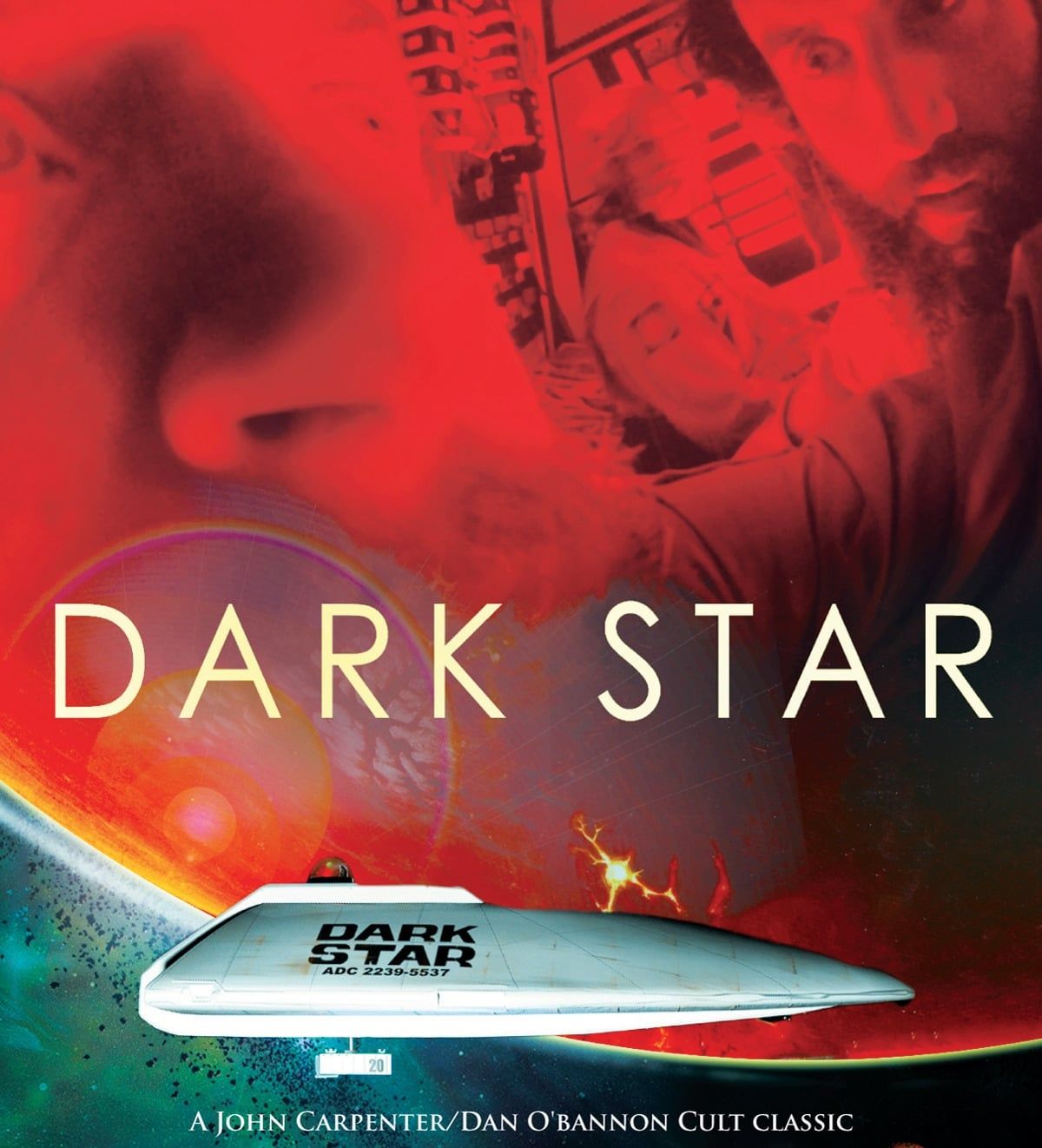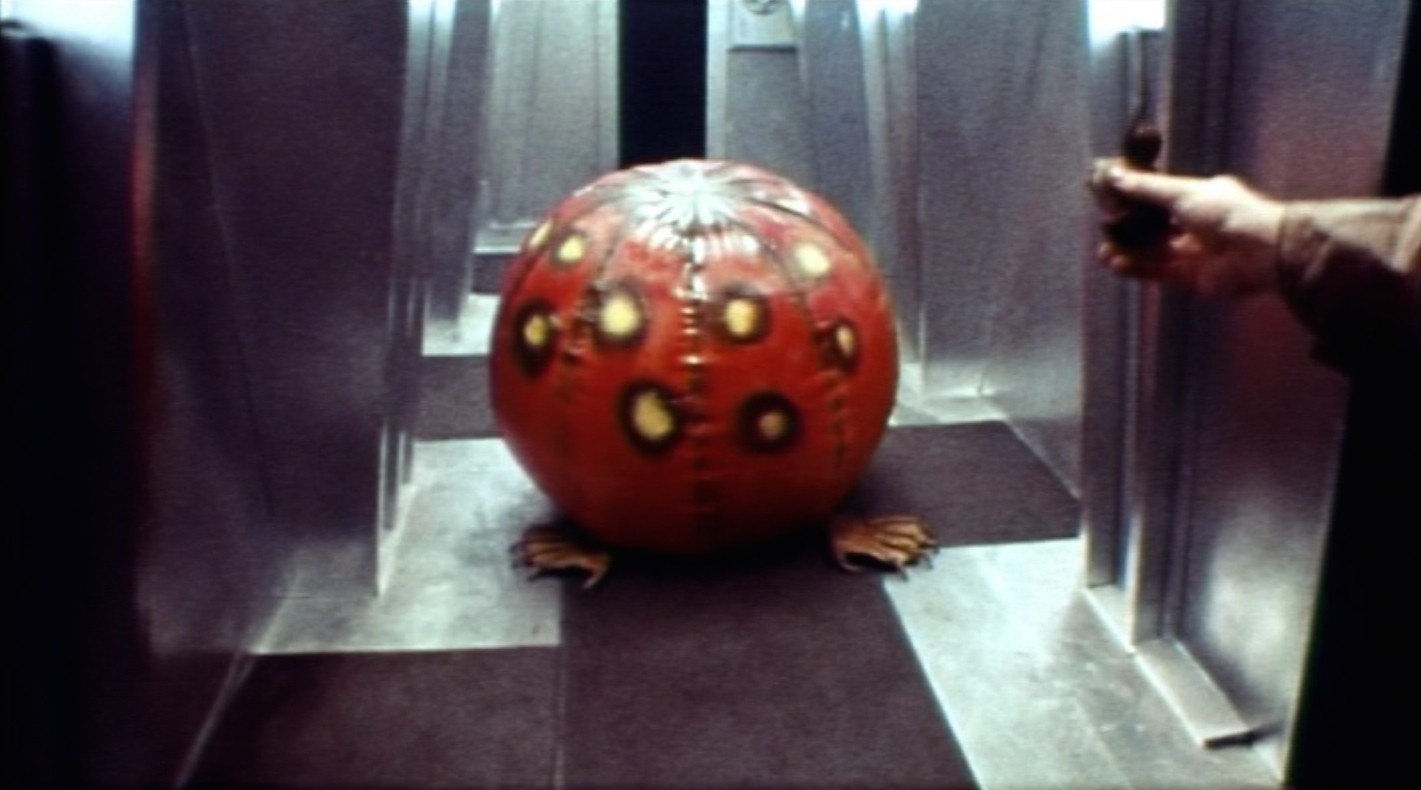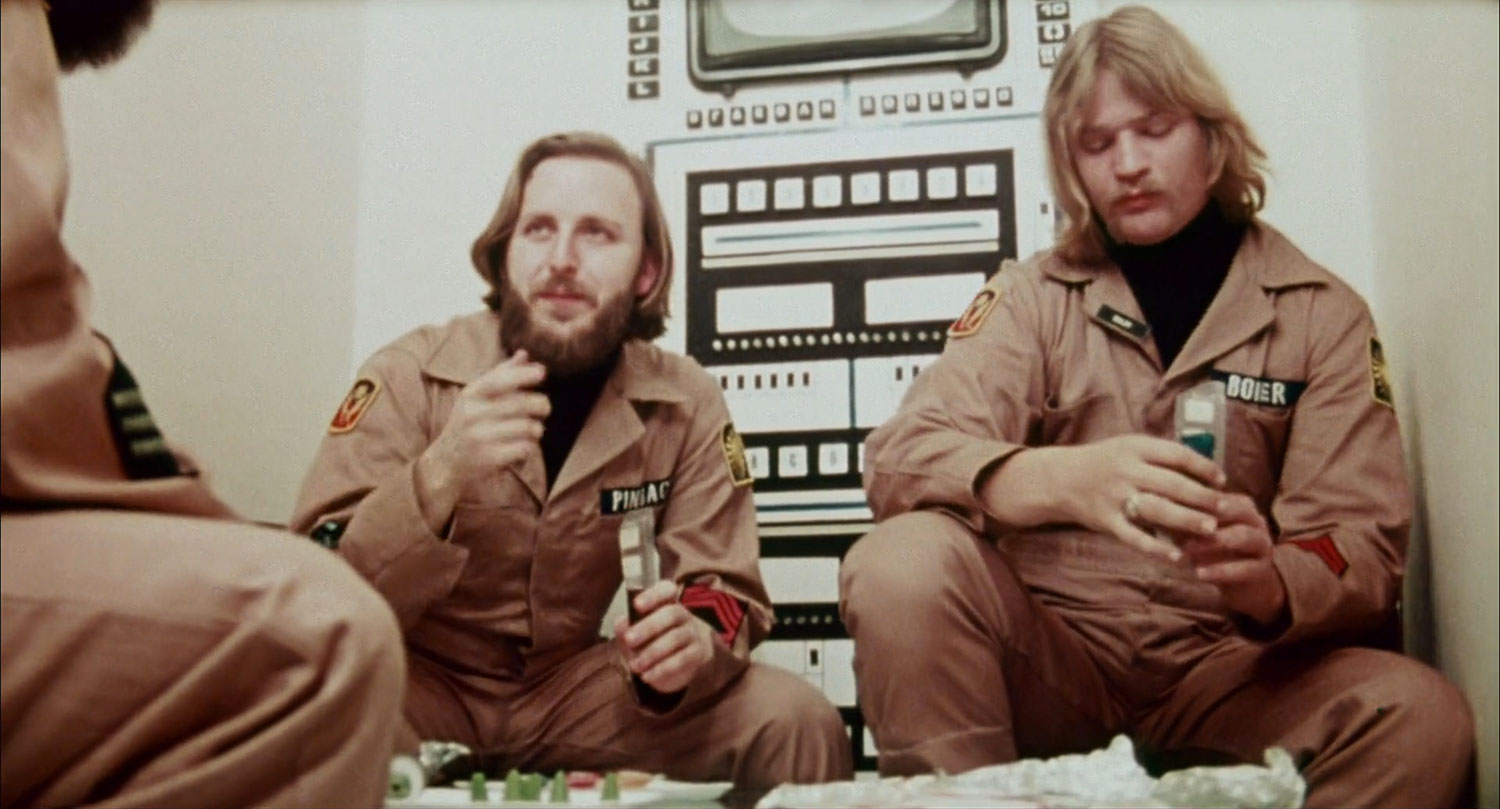We have peered up into the night sky for as long as humanity has existed, wondering what lies beyond the ever-present border of our atmosphere. Our forebears had stories to explain constellation formation; today, we have a film to express our theories. Many of these films have become cult favorites, spawning a slew of fandoms and space theories. Dark Star is one such film.
John Carpenter and Dan O’Bannon directed, produced, and co-wrote Dark Star, an American science fiction comedy film released in 1974. The film is a low-budget satirical science fiction film about a squad of scientists whose mission is to destroy unstable planets. They battle an extraterrestrial mascot that looks like a beach ball, as well as a “responsive” and sentient bombing weapon that begins to doubt its own existence 20 years into the mission.
They’re Not Lost In Space; They’re Loose! – Dark Star (1974)

The movie begins when the spacecraft receives an incoming transmission from Earth. Watkins claims that the journey is being streamed live. The film takes place in the year 2150. It takes around ten years for the messages to arrive. Commander Powell has perished as a result of a nuclear leak. As a result, Earth is in mourning for a week, and all flags are at half-mast, but Congress refuses to fund a radiation shield.
The starship is called “Dark Star.” As the message ends, we see a shot of Talby, one of the astronauts, nodding off. The team communicates with Bomb 19, a planet-destroying bomb that is about to be detonated. Dark Star enters hyperspace and exits the impacted area of the planet, witnessing the explosion from a safe distance.
According to the computer, the astronauts have eliminated the last unstable planet in that system. However, the computer discovers another unstable red-dwarf planet, so the team sets out to investigate. Interestingly enough, the double rows of large buttons on the bridge consoles that we see the crew using were actually ice cube trays illuminated from beneath, due to the film’s tight budget.
One of the crew members, Francis Boiler, turns on the radio, and ‘Benson, Arizona’ by John Carpenter, begins playing. To pay homage to the movie, the town of Benson, Arizona, has a street named Dark Star Road. According to the ship’s log, a section of the vessel self-destructed, destroying all the toilet paper. We also see the crew dancing to the beat of some groovy music.
The computer switches the music off to warn them of an impending collision. As an asteroid storm damaged the defense system some time ago, they have 35 seconds to activate it manually. Despite this, a bomb is accidentally set off by the storm. Bomb 20 is deployed, but the computer overrides the commands, and Bomb 20 returns to its original location, and the scene cuts to a crater left by the damaged laser machine.
When the storm ends, Lt. Doolittle, Sgt. Pinback and Talby retire to their quarters. They all sleep in the same room. The room is evocative of a 1960s project apartment. They continue to entertain themselves in various ways, and Doolittle starts making music with glass bottles.
Talby is supposed to be keeping an eye on the ship, but he’s usually napping. Doolittle believes Talby should spend more time exploring the rest of the ship. Talby, on the other hand, enjoys gazing at the marvels and colors of space. Inside the ship, Francis Boiler begins blasting a square of metal to divert himself, despite Pinback’s warning.
The computer informs Pinback about the pet alien needing to be fed while reminding him that it was his idea to bring the alien aboard. While being fed, the alien accidentally escapes and creates chaos on the ship, and causes problems to the already damaged communications laser. This occurrence causes Bomb 20 to receive the drop order and prepare for its run for a second time.
The computer attempts to reason with it, claiming it was yet another error. Bomb 20 eventually agrees but promises it will be the last time it will listen. Fascinatingly enough, the “talking bombs” were made out of plastic model kits for cars and trucks in this film. “Matra,” the car model’s name, can be seen in a few shots of the bomb.
Meanwhile, Doolittle and Talby are up in the dome, dreaming about what they want to do with their lives when Talby receives a general warning about the communications malfunction on his panel display and alerts Doolittle, who advises him not to worry about it. Concerned, Talby pinpoints the issue and walks down to repair the laser. Pinback then approaches Doolittle and Boiler after encountering the alien and attempts to speak with them, but they both ignore him.
They eat lunch together and discuss Talby’s mental instability. Meanwhile, Powell states that he had no plans of returning to Earth, and Pinback examines his previous journal entries, noting that no one recognizes his wonderful traits and that no one wishes him a “happy birthday.” The computer also finally identifies the source of the problem: the laser, and except for Pinback, everyone falls sound asleep.
The crew eventually reaches the unstable planet, and Bomb 20 is detonated. Pinback is in the emergency airlock, which has a door that can be opened without being depressurized. There’s a laser there that’s faulty, but no one wants to hear Pinback because they are too preoccupied with launching Bomb 20. The laser is activated, and it blasts into the ship, blinding Pinback as he walks through the path of the laser beams.
This causes more malfunctions, and they are unable to drop the bomb. As the explosion sequence continues, everyone on the bridge panics, and Bomb 20 refuses to stop. The computer can limit the ship’s damage caused by Bomb 20 to a limited extent, so they need to ask Powell, who is in the cryogenic deep-freeze chamber, what they can do.
Powell inquires about the Dodgers and expresses his loneliness. When Powell is ready to make a proposal, the microphone fails, and he forgets about what he is about to say. Meanwhile, Pinback reasons with Bomb 20, as Doolittle interrogates Powell. Doolittle then travels to space and converses with Bomb 20.
Bomb 20 admits that its perception of the outside world is probably based on incorrect information. It would be wonderful to continue discussing the topic with Doolittle, but it doesn’t have time since it needs to detonate. In the meantime, Boiler attempts to shoot the bomb and almost succeeds while fighting Pinback. Doolittle advises Bomb 20 to contemplate its life mission.
To explode, of course, says Bomb 20, but agrees that it doesn’t want to detonate at the wrong time, although previously admitting that it has no proof that the outer world exists. It has no evidence that the orders are correct or incorrect, so it returns inside to ponder the situation. Doolittle attempts to save Talby, who was shot out of Dark Space, and Bomb 20 determines that no order from the outside world can be trusted and gleefully explodes, killing Boiler and Pinback. Talby and Doolittle are stranded in space, and Powell floats away, encased in a block of ice.
Talby makes contact with the Phoenix Asteroids, which are passing by, and is taken away to circle the Universe. Doolittle observes rubble from the Dark Star’s remnants drifting by and grabs hold, using the debris to soar into the planet’s atmosphere. A piece of the debris floating behind Doolittle is marked “toilet tank thx1138”. It references George Lucas’s “THX 1138 (1971),” a feature film adapted from a student film project at the University of Southern California. Doolittle transforms into a falling star before blinking out of existence for a brief period, as the theme song plays once again.
The film’s ending was very definitely inspired by and modified from Ray Bradbury’s science fiction short tale “Kaleidoscope.” The plot of Bradbury’s novel revolves around a crew of rocket men floating apart in space after their spacecraft explodes. Only two men remain in radio communication; one is taken away by an exquisite, colorful meteor swarm, while the other crashes to Earth as a shooting star. At the end of “Dark Star,” this circumstance is precisely replicated, and part of the conversation is directly borrowed from Bradbury’s prose.
Alien mascot

Due to “Dark Star’s” poor budget, the “alien” was plainly a beach ball that could only be used for humor. The crew discovers it while touring the Magellanic Cloud. Pinback brings it on board the ship because he believes the ship needs a mascot, and he finds the alien cute.
The alien is roughly half the size of Pinback and looks like a giant orange beach ball with two clawed feet. As Pinback sweeps up the alien’s dwelling quarters, the monster assaults him and flees into the ship’s depths. The alien wanders about the Dark Star, eventually finding its way to the broken communications laser and accidentally causing even more difficulties with it.
Pinback ultimately locates the alien and attempts to knock it senseless with an anesthetic dart, but instead kills the creature, which responds to the needle’s contact by explosively expelling gas from its body and flying about the room until resting entirely deflated on the floor. In the movie, it is also debated if the alien is “actually alive” since it is just a being filled with gas.
Why should you watch Dark Star?

Even four decades after its first debut, Dark Star is considered to be one of the sharpest and finest science fiction films ever made. Dark Star had a tale to tell and a message to convey: and it’s not concerned with trying to be everything to everyone, like so many other films. Dark Star’s low-budget, practical special effects not only do not detract from the tale but really add to its appeal.
Dark Star does not go the more straightforward and more marketable way but instead is a crazy mix of space opera, intelligent bombs, and beach balls from other worlds. It is a fun, bright, and thoughtful movie, and the humor is wry, laidback, and adapts to the situations presented. This cements its place as a must-watch for anyone who likes movies about space and satire.
